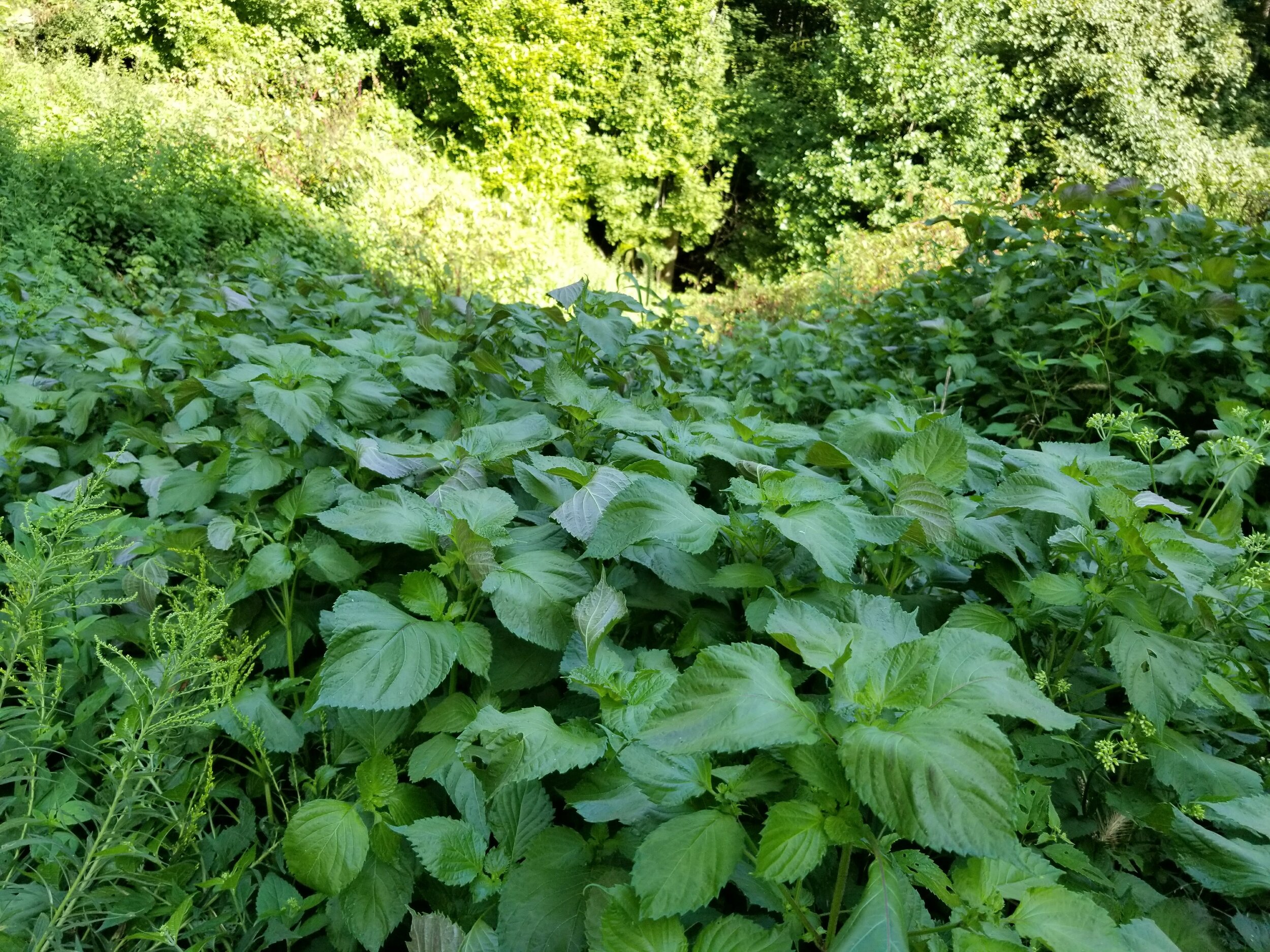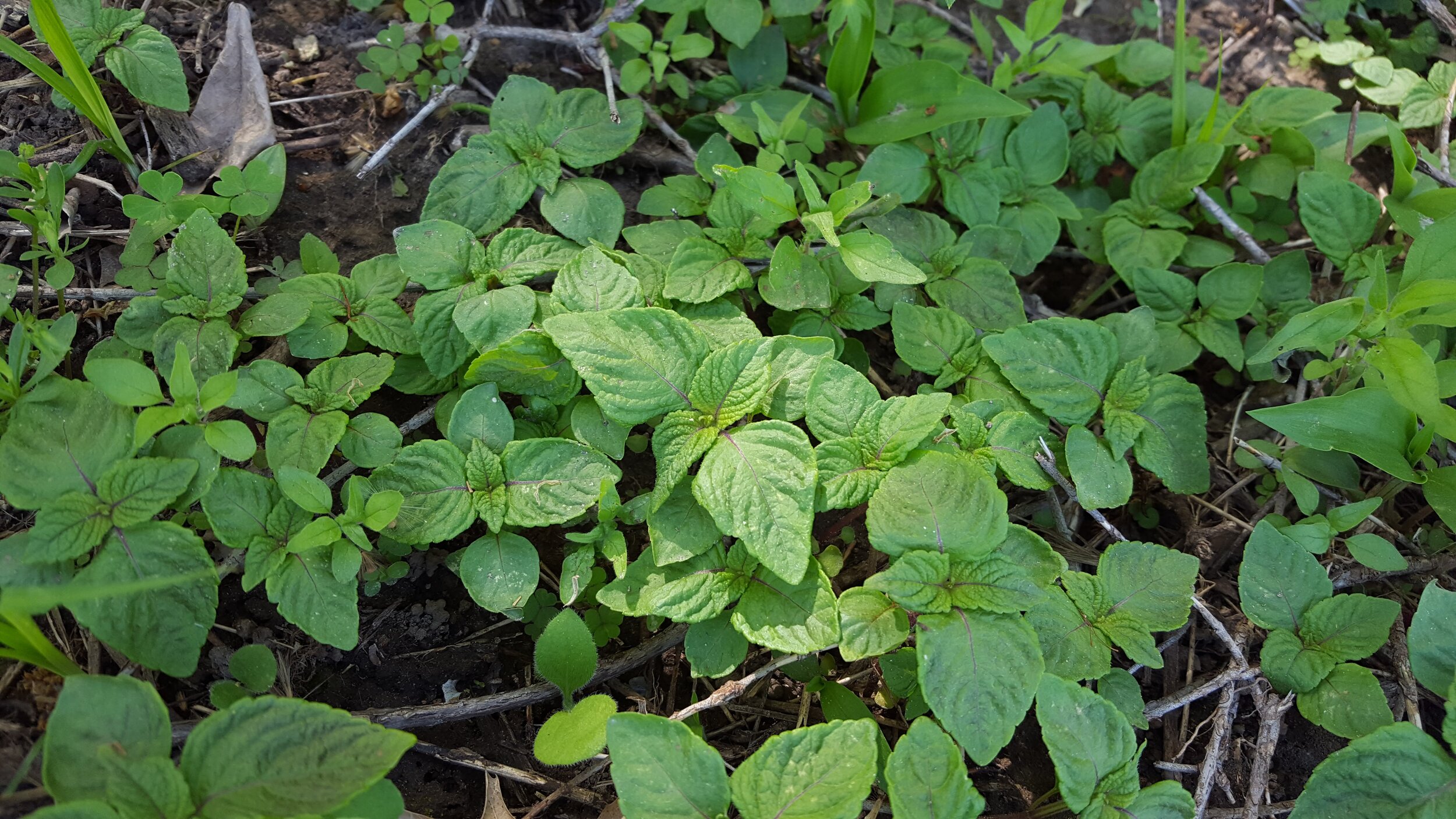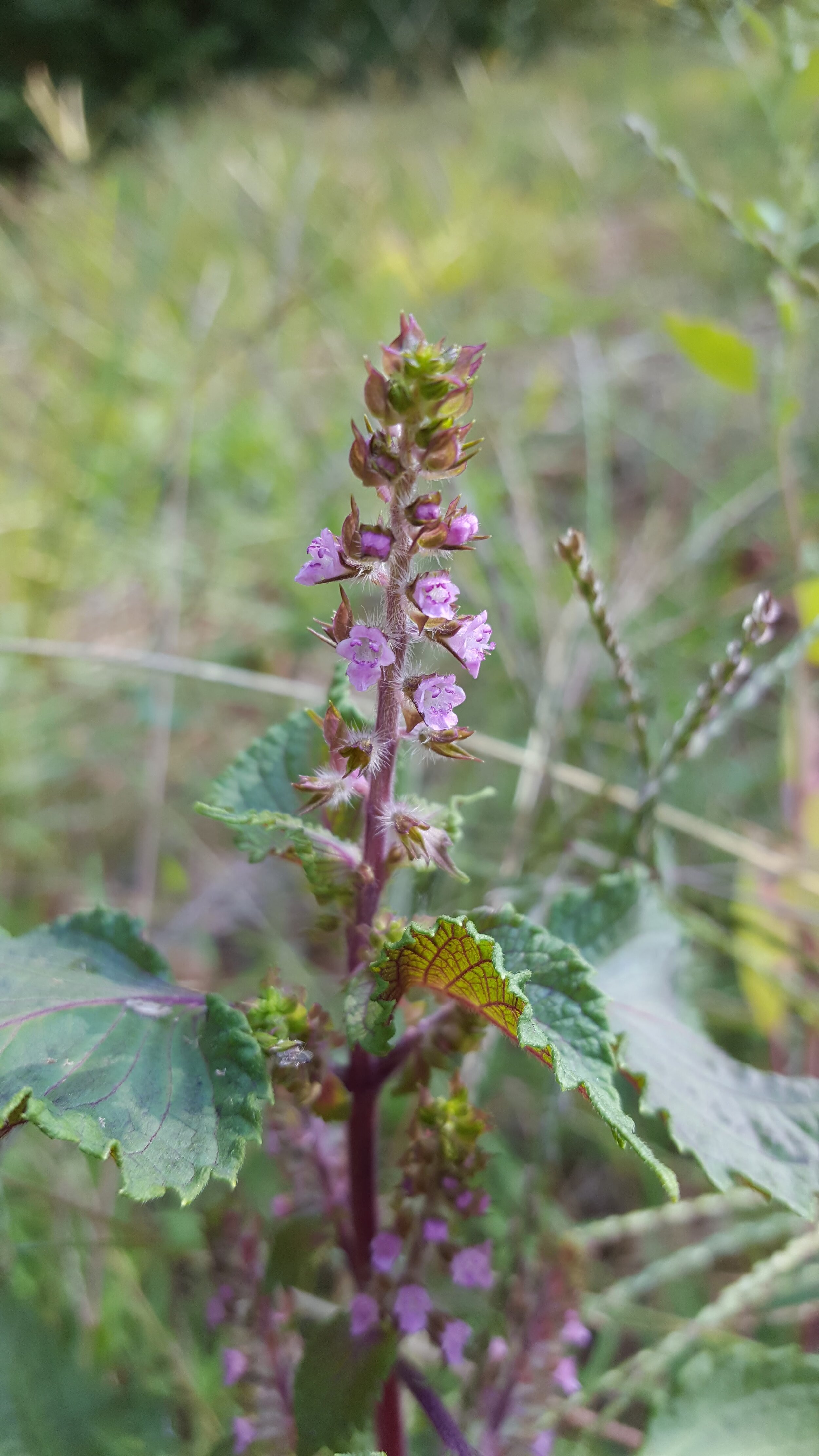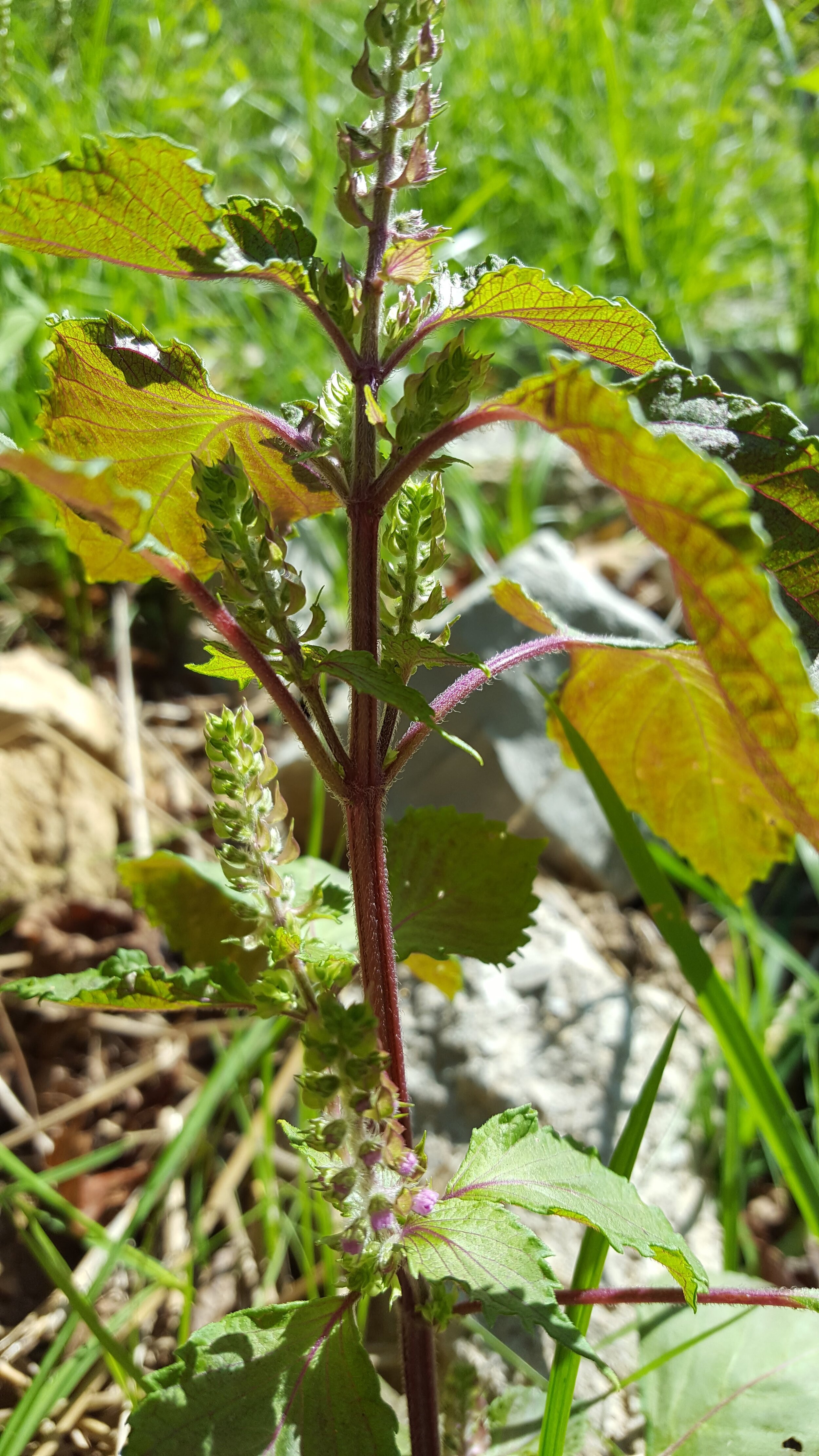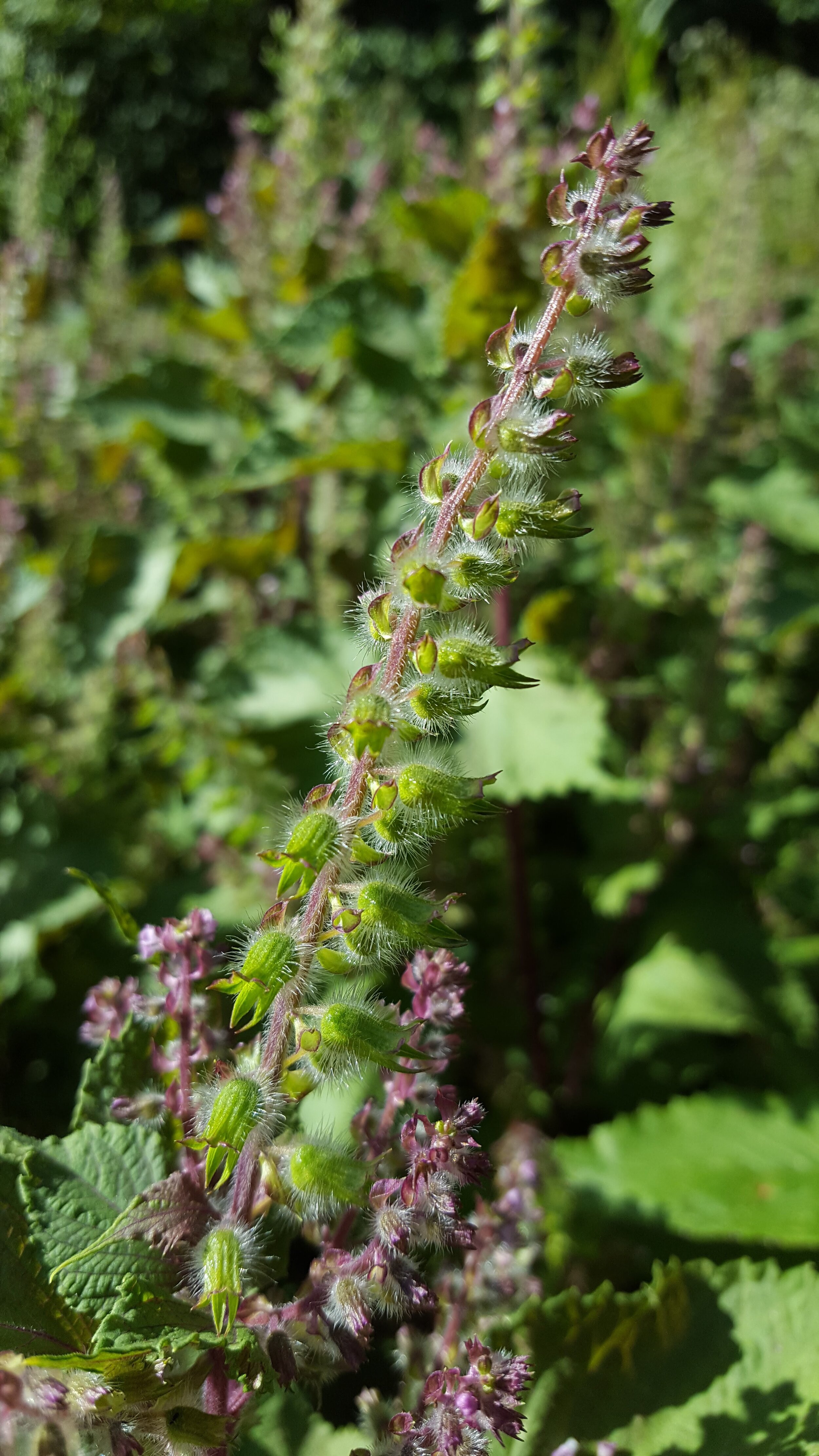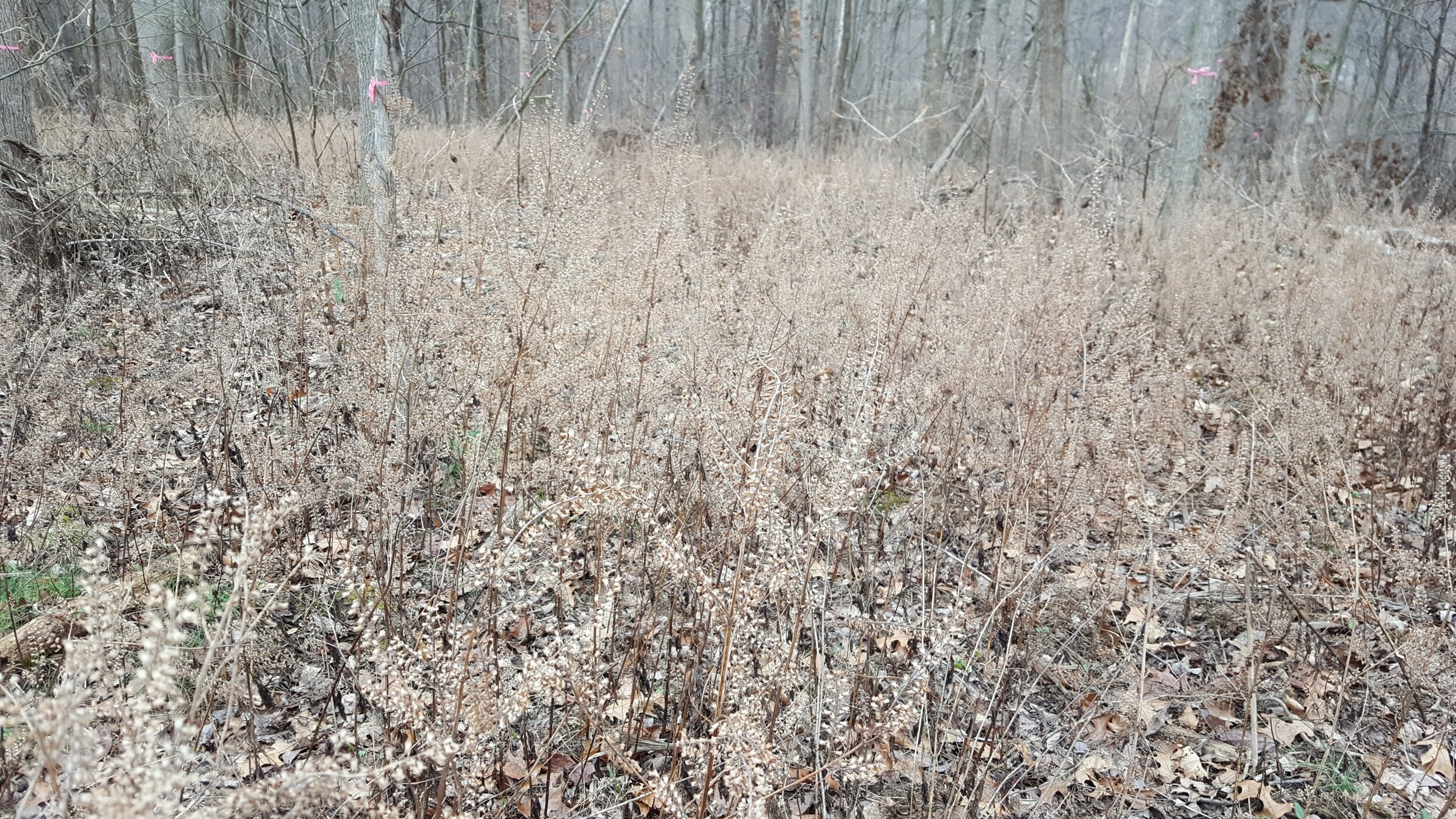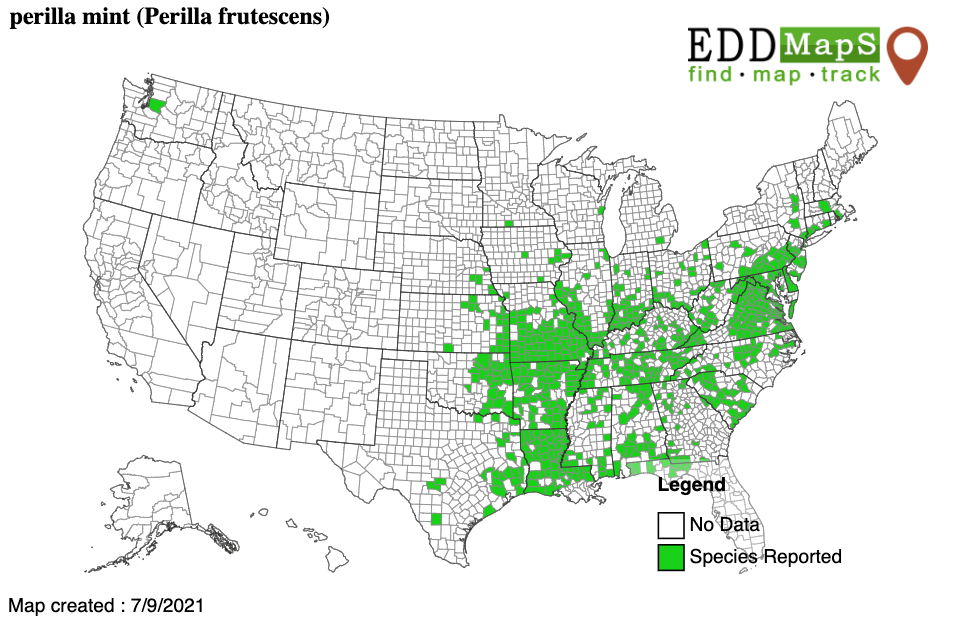July 2021 Invasive Plant of the Month
SICIM Email
Beefsteak Plant (Perilla frutescens L.)
Also known as Perilla or Perilla mint, beeksteak plant (Perilla frutescens L.) is an herbaceous summer annual plant that easily invades disturbed/early successional sites and is typically found along wood edges, old fields, pasturelands, ditches, riparian areas, and roadsides. This plant can first be spotted in late spring to early summer every year and grows quickly, when conditions are favorable. A native of Southeast Asia, this species was introduced to North America as a culinary and ornamental plant and has been reported in 36 Indiana counties (mostly in the southern part of the state).
IDENTIFICATION & BIOLOGY: Beefsteak plant is an annual plant in the Lamiaceae family (aka Mint family) that reproduces prolifically via seeds. It has opposite, coarsely toothed leaves with a distinctive off mint smell. Depending on the variety, the leaves can be a deep reddish purple to greenish with a reddish-purple blush to the underside. Like other mints, its stems are square and have a red-purple color with small hairs. Flowers are small, pinkish and arranged in spikes in mid to late summer (August-September). Seeds, that are almost spherical in shape, mature in fall (October) and can be easily spread by mowing, logging, and agricultural machinery as well as some dispersal by birds, wind, and water.
LOOK-A-LIKES: There are no native plant look-a-likes to beefsteak plant. Some varieties of the exotic, ornamental annual Coleus may look similar but will have smaller rounded toothed margins and not the same distinct minty smell of beefsteak plant.
HABITAT & DISTRIBUTION: Beefsteak plant prefers full sun to light shade and moist to fairly dry soil conditions. It can be found in disturbed areas along wood edges, old fields, pasturelands, ditches, riparian areas, and roadsides. It has been reported in most southern counties of Indiana and is found in the Midwest, Great Plains, Mid-Atlantic, and Southern US states.
ECOLOGICAL THREAT: The largest economic threat of this invasive species is the toxicity of its ketone molecules if ingested by livestock. It can cause a respiratory distress syndrome called panting disease that has the potential to kill cattle and other livestock if consumed in large enough quantities. In addition, beefsteak plant has 9 allelopathic compounds that can inhibit certain plant and crop species. Beefsteak plant can form dense stands in disturbed areas and set back desired plant growth.
CONTROL: The most effective control may be mowing to reduce/setback seed production, followed by an herbicide application to the resprouts and new seedlings later in the summer as outlined in the “Chemical” section below.
WARNING: This plant is poisonous to some animals and livestock. Also, beefsteak plant has the potential to cause dermatitis when handled repeatedly or for long periods of time. Use caution when managing this plant.
Prevention: Beefsteak plant seed often is inadvertently spread by mowing, road maintenance, logging, or agricultural machinery. Mow infested areas along roadsides, ditch banks, forest and field edges before seed matures. Avoid working, recreating in or walking or driving through infested areas during seed dispersal. Also, clean clothing, shoes, ATVs or vehicles following activity in infested areas. Also, do not plant beefsteak plant seeds!
Manual: Can be effective for single plants or very small infestations. Pull or dig up the plants, place in trash bag and dispose of with regular trash. Always wear protective clothing, including gloves and eye protection.
Mechanical: Mowing or cutting may reduce seed set and spread but should be followed up with chemical treatments to effectively control.
Chemical: Effective for large infestations and for spot foliar spray applications to individual and clumps of plants. Herbicide application should be performed while the plant is actively growing and before flowering. It may require at least two rounds of foliar treatments to get stragglers and newly germinated seedlings throughout the summer. The following herbicide active ingredients plus .25% nonionic surfactant are recommended for foliar spray applications:
Glyphosate: Use herbicides containing at least a 41% concentration of glyphosate and follow label directions to mix a 0.5% spray solution. Thoroughly wet all surfaces of the plant, but not to the point of runoff. Use caution as glyphosate is non-selective and will damage or kill any plant it contacts.
2,4-D Amine Salt: Use herbicides containing 46.8% active ingredient and follow label directions to mix a 0.55% spray solution. This spray will not harm grasses, only other broadleaf plants.
IMPORTANT: The pesticide label is the law! When using any chemical control, always read the entire pesticide label carefully, follow all mixing and application instructions and use all personal protective gear and clothing specified. Contact the Office of Indiana State Chemist (OISC) for additional pesticide use requirements, restrictions or recommendations.
Maintenance: Follow-up treatments will be required, as seeds already present in the soil will sprout.
REFERENCES & OTHER RESOURCES:
https://www.illinoiswildflowers.info/weeds/plants/beefsteak.htm
https://www.koreascience.or.kr/article/JAKO199403042968663.pdf
https://books.google.com/books/about/Invasive_Plants.html?id=FjESf1w8_uwC
http://knoxcountyswcd.com/wp-content/uploads/2017/10/Weed-of-the-Month-for-September-2017.pdf
http://knoxcountyswcd.com/wp-content/uploads/2019/12/Beefsteak-Plant-Control-Sheet.pdf
LOOK-A-LIKE REFERENCES:
#BeefsteakPlant #Perillafrutescens #IndianaInvasiveSpecies #IndianaInvasivesInitiative

